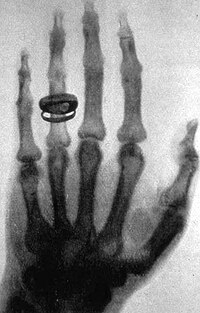
Photo from wikipedia
Superior vena cava syndrome (SVCS) is an uncommon condition resulting from extrinsic compression or intraluminal blockade of the superior vena cava. The increased upper body venous pressure results in distended… Click to show full abstract
Superior vena cava syndrome (SVCS) is an uncommon condition resulting from extrinsic compression or intraluminal blockade of the superior vena cava. The increased upper body venous pressure results in distended subcutaneous vessels and oedema of the head, neck and arms. SVCS can be a medical emergency if associated with laryngeal or cerebral oedema. The most common SVCS aetiologies are intrathoracic malignancies, accounting for 60 to 86% of cases [1–3]. Standard bronchoscopy and EBUS-TBNA have good diagnostic yield and are relatively safe procedures in the setting of SVCS. However, complications may arise from the underlying malignancy and its proximity to central vital structures. https://bit.ly/37HXFUY
Journal Title: ERJ Open Research
Year Published: 2020
Link to full text (if available)
Share on Social Media: Sign Up to like & get
recommendations!